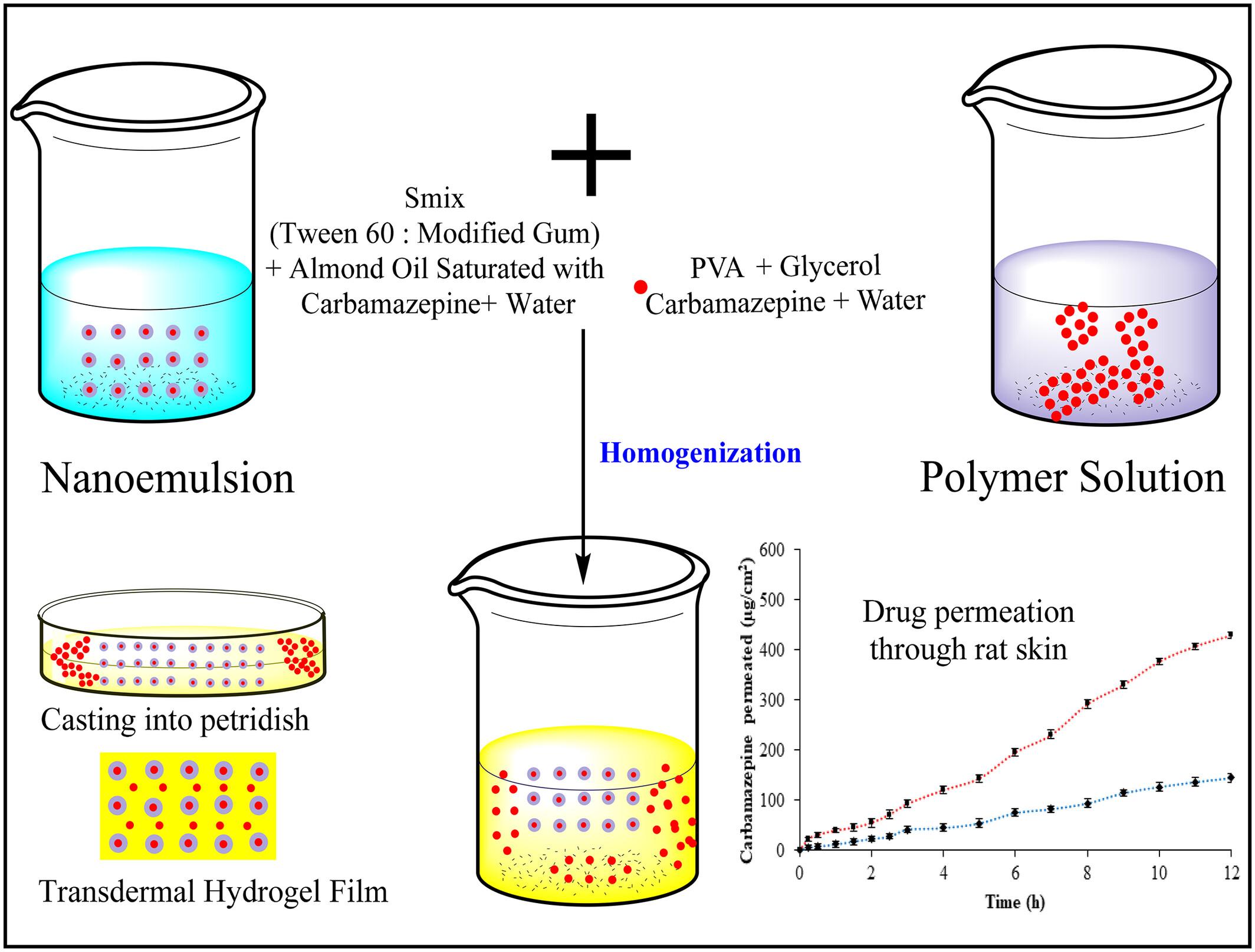Nanoemulsion-laden poly(vinyl) alcohol hydrogel films for transdermal delivery of carbamazepine
Abstract
There is an unmet demand for transdermal devices that can deliver large dose of medications through the skin. Herein, nanoemulsion-based poly(vinyl alcohol) (PVA) transdermal hydrogel films were developed for the high-dose anti-epileptic drug carbamazepine. A stable nanoemulsion was created with almond oil, Tween 60, and amphiphilic locust bean gum. The nanoemulsion had a hydrodynamic diameter of 251 nm, a polydispersity of 10.3%, and a zeta potential of −51.2 mV. Carbamazepine-loaded nanoemulsion was blended with carbamazepine-free PVA dispersion and casted into films. To accommodate a high dose, carbamazepine-loaded nanoemulsion was trapped in a PVA dispersion containing carbamazepine to create transdermal films. The physicochemical characteristics and drug penetration characteristics of the produced films were compared. Both films had the uniform thickness, weight, and drug content. The folding endurance was found to be greater than 700 in both cases. Water vapor permeability decreased when carbamazepine was added to almond oil as well as polymer dispersion. FESEM pictures revealed a waxy paper-like appearance for the PVA hydrogel film with dual drug-reservoirs. FTIR spectra assessment revealed a hydrogen bonding interaction between PVA and carbamazepine. X-ray diffraction examination revealed that the film contained an amorphous dispersion of carbamazepine. Dual carbamazepine reservoir-based films outperformed single nanoemulsion drug reservoir-based films in terms of drug flux through excised rat skin by 3.2 times. The in vitro skin permeation findings corresponded well to zero order kinetic models. Overall, this study showed that a high-dose drug could be placed on nanoemulsion-based transdermal PVA hydrogel films, resulting in improved skin permeability.
Highlights
- Nanoemulsion was stable at almond oil:Tween 60/modified gum ratio of 5:5.
- Loading of high dose carbamazepine in nanoemulsion-PVA transdermal films.
- Film of dual carbamazepine reservoir showed low water vapor permeation, moisture retention.
- Flux of carbamazepine from films improved three times through excised rat skin.


 求助内容:
求助内容: 应助结果提醒方式:
应助结果提醒方式:


